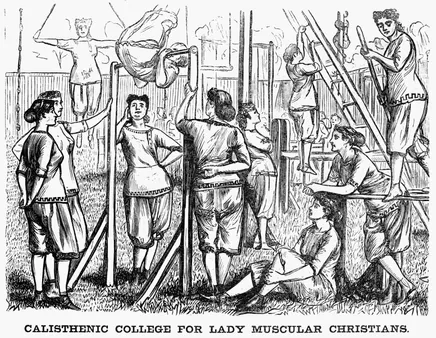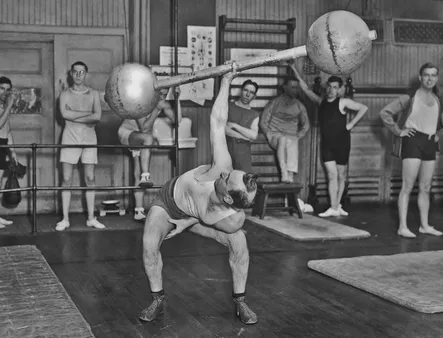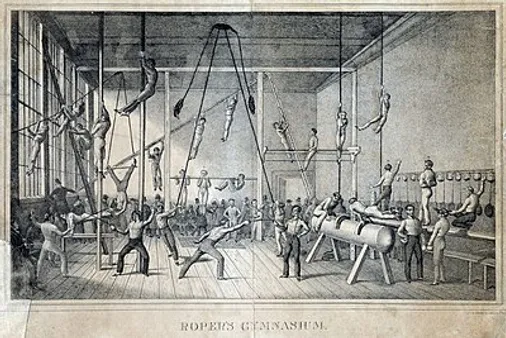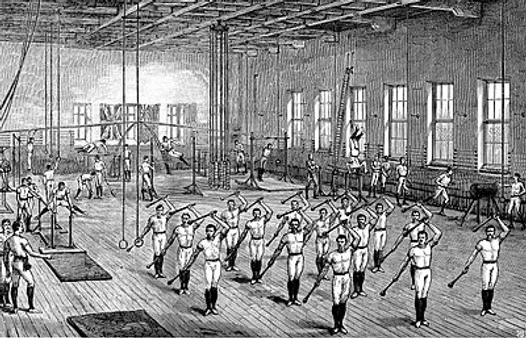Table of Contents
In the realm of fitness, calisthenics stands as a testament to the power of bodyweight exercises. With its roots deeply embedded in ancient civilizations, calisthenics has evolved into a modern fitness phenomenon, captivating individuals worldwide. Embark on a journey through time to uncover The history and origins of calisthenics, tracing its evolution from ancient practices to its current status as a global fitness trend.
The History and Origins of Calisthenics: A Journey Through Time
I. The Ancient Roots of Calisthenics: Tracing Its Earliest Forms
The Ancient Roots of Calisthenics: Tracing Its Earliest Forms
An Enduring Legacy: Calisthenics Throughout the Ages
Calisthenics, the art of bodyweight training, boasts a rich history spanning millennia, with its origins deeply entwined with humanity's quest for physical prowess and well-being. In ancient Greece, calisthenics formed an integral part of military training, preparing soldiers for the rigors of combat. The Greek term "kalos sthenos," meaning "beautiful strength," encapsulates the ideal of achieving physical perfection through disciplined bodyweight exercises.Over the centuries, calisthenics continued to thrive in various cultures, finding expression in diverse forms. In ancient Rome, the gladiators employed calisthenics to enhance their strength and agility in the arena. In India, the ancient practice of yoga, with its emphasis on bodyweight postures and controlled breathing, shares many similarities with calisthenics.
Culture | Key Focus |
Ancient Greece | Military training, aesthetic development |
Ancient Rome | Gladiatorial combat |
India | Yoga, mind-body connection |
Modern Resurgence: Calisthenics in the 21st Century
The 21st century has witnessed a resurgence of interest in calisthenics, largely driven by the rise of online communities and social media platforms. This renewed popularity can be attributed to several factors:• Accessibility: Calisthenics requires minimal equipment, making it accessible to people of all fitness levels and socioeconomic backgrounds.• Effectiveness: Calisthenics exercises engage multiple muscle groups simultaneously, leading to improved strength, endurance, and coordination.• Variety: Calisthenics offers a wide range of exercises, allowing individuals to create diverse and challenging workout routines.• Community: Online forums and social media groups provide a sense of community, motivation, and support among calisthenics enthusiasts.
- Calisthenics is accessible, effective, varied, and has a strong community.
- Its resurgence is a testament to its enduring value and adaptability.
The Future of Calisthenics: Continued Growth and Innovation
As calisthenics continues to gain traction, we can expect to see ongoing growth and innovation in the field. New variations of exercises, training methodologies, and technological advancements will contribute to the evolution of calisthenics. Additionally, the increasing emphasis on holistic health and wellness may further fuel the popularity of calisthenics as a comprehensive approach to fitness.
Related KizWorld Posts
- How to Build Muscle and Strength with Calisthenics
- The Best Calisthenics Exercises and Variations
- The Top Calisthenics Competitions and Challenges
Calisthenics, with its rich history, modern resurgence, and promising future, stands as a testament to the enduring human pursuit of physical excellence and holistic well-being. Its adaptability and accessibility make it a versatile fitness discipline suitable for individuals of all ages and abilities. As we move forward, we can anticipate continued innovation and growth in the realm of calisthenics, further solidifying its place as a cornerstone of a healthy and fulfilling lifestyle.
II. From Ancient Greece: The Birthplace of Calisthenics
From Ancient Greece: The Birthplace of Calisthenics
Calisthenics, the art of bodyweight training, traces its roots back to the ancient city-states of Greece. In the 5th century BC, the Greek military embraced calisthenics as a means to enhance the physical prowess of its soldiers. These exercises, known as "gymnastics," were designed to develop strength, agility, and endurance, preparing warriors for the rigors of battle.
The Greeks believed that a strong and healthy body was essential for a virtuous and productive life. Calisthenics was not merely a training method but a way of life, deeply ingrained in Greek culture. From the elite athletes who competed in the Olympic Games to the ordinary citizens who sought physical fitness, calisthenics permeated all levels of society.
- Gymnasia: The Greeks constructed specialized facilities called gymnasia, where individuals could engage in calisthenics and other physical activities. These gymnasia were often adorned with statues of gods and heroes, inspiring the athletes who trained within their walls.
- The Olympic Games: Calisthenics played a prominent role in the ancient Olympic Games, the most prestigious athletic competition in the Greek world. Gymnastic events, such as wrestling, running, and jumping, showcased the physical prowess of the athletes and were highly regarded by the spectators.
The legacy of Greek calisthenics extends far beyond the confines of ancient Greece. Its principles and exercises have influenced modern fitness practices, including gymnastics, bodybuilding, and CrossFit. Calisthenics continues to captivate individuals worldwide, offering a simple yet effective way to achieve physical fitness and overall well-being.
As we delve deeper into the history of calisthenics, we will explore the contributions of other cultures and individuals who have shaped this remarkable discipline. From the ancient Greeks to contemporary fitness enthusiasts, calisthenics has stood the test of time, proving its enduring value as a means to cultivate strength, agility, and a healthy lifestyle.
The History and Evolution of Gymnastics
Name | Sport | Achievements |
Leonidas of Rhodes | Running | Won the stadion race in the Olympic Games 12 times |
Milo of Croton | Wrestling | Won the wrestling competition in the Olympic Games six times |
Theagenes of Thasos | Boxing | Won the boxing competition in the Olympic Games four times |
The ancient Greeks' emphasis on physical fitness and the development of a strong and healthy body through calisthenics laid the foundation for modern fitness practices. Calisthenics continues to be a popular form of exercise today, with people of all ages and fitness levels enjoying its many benefits.
The Benefits of Calisthenics for Bodyweight Training
In the following sections, we will explore the various aspects of calisthenics, including its benefits, exercises, training methods, and the inspiring stories of individuals who have achieved remarkable feats of strength and agility through calisthenics. Whether you are a seasoned athlete or just starting your fitness journey, calisthenics offers a challenging and rewarding path to physical excellence.
III. The Modern Era: The Evolution of Calisthenics
The Modern Era: The Evolution of Calisthenics
The modern era of calisthenics has witnessed a remarkable resurgence in its popularity, driven by a growing awareness of its numerous benefits and the proliferation of online resources and communities. This renewed interest has led to the development of new training methods, variations, and progressions, making calisthenics accessible to individuals of all fitness levels and backgrounds.
One of the key factors contributing to the resurgence of calisthenics is the increasing emphasis on bodyweight training as a safe and effective way to build strength, muscle mass, and functional fitness. Calisthenics exercises utilize a person's own body weight as resistance, eliminating the need for expensive gym equipment and making it a convenient and accessible form of exercise.
Benefits of Calisthenics | Description |
|---|---|
Bodyweight Training | Utilizes a person's own body weight as resistance, making it accessible and convenient. |
Functional Fitness | Develops strength, muscle mass, and functional fitness, improving overall physical performance. |
Injury Prevention | Promotes balanced muscle development and reduces the risk of injuries associated with traditional weightlifting. |
Versatility | Can be performed anywhere, anytime, without the need for specialized equipment. |
Community and Support | Online communities and resources provide motivation, support, and guidance for calisthenics enthusiasts. |
Another factor driving the popularity of calisthenics is the growing recognition of its benefits for overall health and well-being. Calisthenics exercises not only improve physical fitness but also promote mental and emotional well-being by reducing stress, improving mood, and boosting self-confidence.
The modern era of calisthenics has also seen the emergence of numerous online resources and communities, providing valuable information, tutorials, and support to individuals interested in learning and practicing calisthenics. These platforms have played a crucial role in disseminating knowledge, fostering a sense of community, and inspiring individuals to pursue their calisthenics goals.
As calisthenics continues to gain popularity, it is likely that we will witness further advancements in training methods, variations, and progressions, making it an even more accessible and effective form of exercise for individuals of all ages and abilities.
To learn more about the history and origins of calisthenics, check out our comprehensive article: The History and Origins of Calisthenics
IV. Calisthenics: A Journey Through the Ages:
Calisthenics: A Journey Through the Ages:
With its simple, yet versatile movements, calisthenics has carved a significant niche in the fitness world. This historical overview embarks on a journey through the ages, exploring the origins and evolution of this dynamic discipline. Get ready for a voyage through time, tracing the remarkable story of calisthenics.
The Roots of Calisthenics: A Legacy of Strength and Grace
Ancient Greece: The Birthplace of Calisthenics | Renaissance Europe: A Resurgence of Physical Culture |
Calisthenics finds its roots in ancient Greece, where it played a crucial role in military training and physical education. Early gymnasiums served as hubs for practicing calisthenic exercises, fostering a culture of holistic fitness. | The Renaissance era witnessed a renewed interest in classical Greek ideals, leading to the revival of calisthenics as a means of developing strength, agility, and grace. |
From Military Training to Modern Fitness Craze
During the 19th century, calisthenics gained traction in military training regimes worldwide, emphasizing its effectiveness in building functional strength and endurance. Notable figures like Friedrich Jahn, often credited as the father of modern gymnastics, championed calisthenics as a cornerstone of physical education. Visit our article on The history and evolution of gymnastics for insights into Jahn's contributions to calisthenics.
The 20th century witnessed a surge in the popularity of calisthenics, particularly in urban areas where space and equipment were limited. Street workout movements and outdoor calisthenics parks emerged, creating vibrant communities of enthusiasts. Learn more about the diversity of calisthenics in our article The difference between calisthenics, gymnastics and street workout.
Calisthenics Today: A Global Phenomenon
In recent years, calisthenics has exploded onto the global fitness scene, capturing the attention of athletes, fitness enthusiasts, and even casual exercisers. From online communities to international competitions, calisthenics has become a symbol of strength, skill, and athleticism. Discover the top calisthenics competitions in our article, The top calisthenics competitions and challenges.
Benefits of Calisthenics: A Path to Strength and Agility
- Enhances muscular strength, endurance, and flexibility
- Improves balance, coordination, and agility
- Boosts cardiovascular health and overall fitness
- Supports weight management and lean muscle gain
- Minimizes the risk of injuries, promotes healthy joints
- Cultivates mental resilience and self-confidence
Getting Started with Calisthenics: A Guide for Beginners
Embrace the world of calisthenics by following these simple steps:
- Master the basics: Begin with fundamental exercises like push-ups, squats, and lunges.
- Progress gradually: As you gain strength, advance to more challenging variations and combinations.
- Choose a suitable workout plan: Tailor your routine to your fitness level and goals.
- Listen to your body: Pay attention to your limits and avoid overtraining.
- Stay consistent: Regular practice is key to achieving visible results.
Whether you're a seasoned athlete or a fitness novice, calisthenics offers a transformative journey towards strength, agility, and overall well-being. Embrace the challenge and embark on this exciting adventure in the realm of bodyweight training.
Additional Resources for Calisthenics Enthusiasts